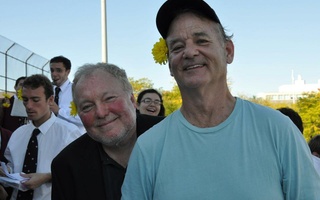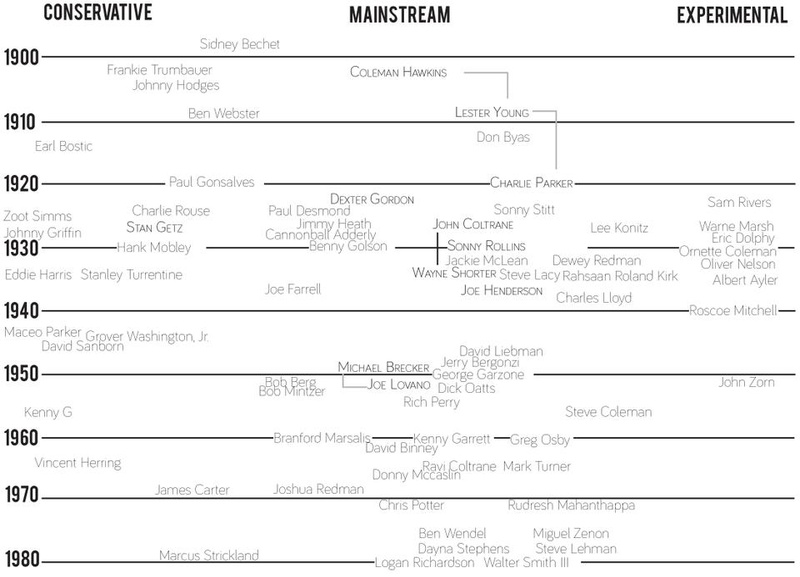In the beginning, there was Coleman Hawkins. Coleman Hawkins begat Ben Webster. And Ben Webster begat Lester Young, and Lester Young begat Charlie Parker. And Charlie Parker begat Dexter Gordon, and Dexter Gordon begat Sonny Rollins. And Sonny Rollins begat John Coltrane, and John Coltrane begat Wayne Shorter. And Wayne Shorter begat Joe Henderson, and Joe Henderson begat Michael Brecker. And Michael Brecker begat Chris Potter.
Do you see anything problematic about the above jazz saxophone genealogy?
Unlike a hereditary genealogy, artistic genealogies are practically impossible to draw convincingly. Art doesn’t move through time in a straight line; it doesn’t even move forward or backward as we conventionally understand what comes before or after. And pairings and confluences of influence occur all the time that would be temporally impossible in hereditary genealogy, made possible by recording technology: the great-grandson might be partially begat by his great-grandfather, but also by his once-removed great-uncle. Tracing the line of influence for an artist is more often than not tracing the knotted tangents and incestuous, polyamorous ties that contribute to the emergence of an individual voice.
I don’t presume to be anything more than a student of the jazz saxophone tradition, but in my few years of study I’ve benefited immensely from drawing my own map of the historical territory. Of course, ignorance and misinformation are par for the course, but it’s been an invaluable exercise to try to orient myself while navigating the unspeakably diverse collection of voices that define the legacy of the jazz saxophone. Please forgive any omissions on my part; some saxophonists I left out intentionally for the sake of space, and many more I’ve left out simply because I haven’t gotten hip enough for them yet.
Coleman Hawkins, Lester Young, Charlie Parker
The typical story is that Coleman Hawkins and Lester Young came together as contrasting influences—r and Lester Young as a rhythmic and stylistic innovator—and begat Charlie Parker, the symbol and definitive voice of bebop in the ’40s, alongside Dizzy Gillespie, until Parker’s death in ’55. Hawkins had already been the dominant voice on his instrument, the tenor saxophone, when Lester Young emerged as a leading soloist in Count Basie’s big band in Kansas City (c. 1933).
Read more in Arts
Smart Girls at the PartyRecommended Articles
-
Colleges Alter Application ProcessesAs high school seniors wade through the college admissions process, some schools are updating their applications in a stated effort ...
-
HUDS Satisfaction DeclinesStudent satisfaction with all aspects of the dining services dropped this year, according to a survey released yesterday.
-
 Bill Murray Conducts the Harvard Band (In Pink Shorts!)
Bill Murray Conducts the Harvard Band (In Pink Shorts!) -
 Emily Tay '09 Featured in Documentary
Emily Tay '09 Featured in Documentary -
Crimson Eyes Europe BallCo-captain Brogan Berry currently has her eyes set on Princeton, Yale, and the rest of the Ivy League. But a year from now, she could be preparing for Bourges, Rivas Ecopolis, or Taranto.
-
Monson Explores the Intricacies of Coltrane“The relationship of the words to the music was a bit of a secret to be discovered,” said Monson. “Not even the musicians in the band knew that he was using a text, which suggests that he had it memorized.”














